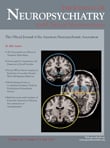MELAS Presented With Status Epilepticus and Anton-Babinski Syndrome; Value of ADC Mapping in MELAS
SIR: Mitochondrial encephalomyopathy, lactic acidosis with stroke-like episodes (MELAS) is a mitochondrial disorder and an important diagnostic consideration in young patients with nonhemorrhagic stroke. 1 We report on a patient with MELAS presented with status epilepticus, and developed Anton-Babinski syndrome during the follow-up.
Case Report
A 38-year-old female admitted to us with prolonged (about 20 minutes) generalized tonic-clonic seizures. They continued after intravenous 20 mg diazepam, but ceased with intravenous phenytoin infusion (20 mg/kg). Neurological examination revealed moderate left hemiparesis and bilateral sensorineural deafness. In past medical history, she had a sudden hearing loss 2 years ago. A conventional hearing aid had been given. However, a clear diagnosis was not established.
The CBC, metabolic parameters and hormone levels were normal. EEG showed diffuse slowing of bioelectrical activity without any epileptiform discharge. T1 and T2 weighted MRI revealed an hyperintense area on right temporo-occipital region. Diffusion-weighted images (DWI) showed diffusion restriction in same area. Intravenous mannitol was initiated with suspicion of edema secondary to an ischemic infarction. The patient became oriented on the second day, but fluctuations in mental status continued in first week. Generalized seizures also occurred, but its duration and frequency decreased with carbamazepine. Echocardiogram and carotid-vertebral Doppler ultrasounds were normal. She was discharged with antiaggregant and antiepileptic treatment.
Control MRI revealed prominent decrease in size of hyperintense area on right temporo-occipital region, but also formation of a new one on left occipital lobe at the end of first month. DWI revealed diffusion restriction in same area. Different from other brain regions, apparent diffusion coefficient (ADC) values were increased in that area ( Figure 1 ). She was hospitalized again. MR spectroscopy showed severely elevated lactate and reduced N -acetylaspartate, glutamate, myo-inositol, total creatine concentrations in these lesions. The serum level of lactic acid was detected as 2000 mg/dl (normal: 20–40 mg/dl). EMG showed pathological myopathic patterns, and nerve conduction velocities were normal. High doses of vitamins and antioxidants were introduced with the diagnosis of MELAS. EEG again revealed only diffuse slowing of bioelectrical activity excluding the nonconvulsive seizures. Although she denied it, she was suspected to have blindness during EEG procedure. After a detailed neuro-ophthalmologic examination, she was detected to have cortical blindness. DWI revealed diffusion restriction in a large area on left occipito-temporal region which could underlie Anton-Babinski syndrome. Hyperglycemia (140–220 mg/dl) was also detected at 15th day, and insulin treatment was initiated. She died after a cardiac arrest despite the resuscitation 2 days later.

Comment
The current knowledge about MELAS in the literature is indispensable especially for establishing an early diagnosis. Diagnostic radiological approaches are important issues in differential diagnosis of MELAS and ischemic stroke. This report clearly illustrates the value of ADC mapping and serial imaging for reaching the MELAS diagnosis in earlier episodes. Acute ischemic infarction with cytotoxic edema is characterized by decreased diffusion and ADC values which can also occur in MELAS. 2 – 4 But it was recently revealed that MELAS lesions could have increased ADC values demonstrating vasogenic edema. 5 Therefore, the DWI and ADC values of this case were in accord with the latter one. Although it could not be excluded in opposite states, MELAS must be highly suspected when restricted diffusion in an area combined with increased ADC values.
Anton-Babinski syndrome is a well-known manifestation of strokes in posterior circulation. This is the first case of MELAS to develop Anton-Babinski syndrome reported in the literature. A clinician must be careful in MELAS patients to notice the formation of new lesions, and should differentiate this entity from other confusional states.
1 . Pavlakis SG, Phillips PC, DiMauro S, et al: Mitochondrial myopathy, encephalopathy, lactic acidosis, and strokelike episodes: a distinctive clinical syndrome. Ann Neurol 1984;16:481–488Google Scholar
2 . Chien D, Kwong KK, Gress DR, et al: MR diffusion imaging of cerebral infarction in humans. AJNR 1992; 13:1097–1102Google Scholar
3 . Iizuka T, Sakai F, Kan. S, et al: Slowly progressive spread of the stroke-like lesions in melas. Neurology 2003; 61:1238–1244Google Scholar
4 . Wang XY, Noguchi K, Takashima S, et al: Serial diffusion-weighted imaging in a patient with melas and presumed cytotoxic oedema. Neuroradiology 2003; 45:640–643Google Scholar
5 . Kolb SJ, Costello F, Lee AG, et al: Distinguishing ischemic stroke from the stroke-like lesions of melas using apparent diffusion coefficient mapping. J Neurol Sci 2003; 216:11–15Google Scholar



